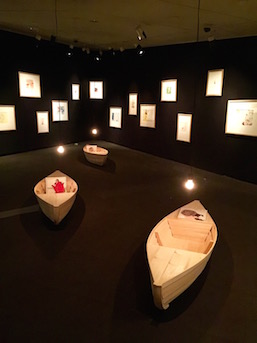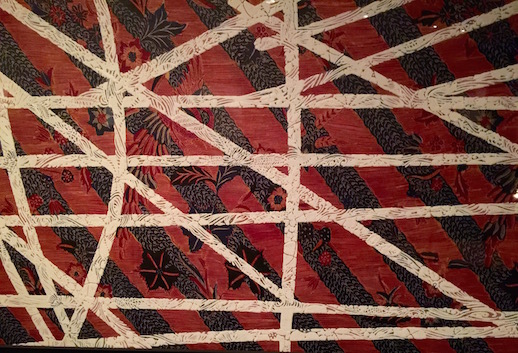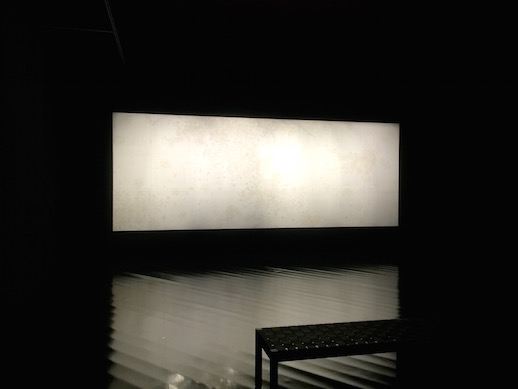Shinji Ohmaki: Where the Gaze Falls

To celebrate Iwasaki’s centennial, this year the museum will hold seven exhibitions on the theme of “Life.” Four will be in Tokyo and the others at the Nagano branch. According to art director Rikako Nagashima, the theme comes from bringing together Chihiro’s ideas on life, which she expressed as not just human existence but humanity, vitality, and different ways of living. The collaborating artists use the subject of life as a starting point for their own interpretations of Chihiro’s vision, each artist choosing work from the museum archives to exhibit with their own projects.
Where the Gaze Falls by Shinji Ohmaki is the first collaboration. Born in 1971, Ohmaki is a Tokyo University of the Arts graduate known for his large-scale installation work. Inspired by Iwasaki’s last completed picture book, Senka no Naka no Kodomotachi (Children in the Flames of War), the exhibition examines the legacy of war, the will to live, and the impact of humans on the environment through travel metaphors and intersecting points of view.

The first and second floors depict what Ohmaki calls “A Grand Voyage.” The first examines the idea of being under the ocean, while the upstairs imagines the surface. The second level is much more playful, and the travel metaphor is more apparent. The room seems designed to be a boat journey at night amid khom loi floating lanterns represented in paintings on the wall. Several of the boats function as bookcases, which is a fun meta-idea about journeys as books enable a reader to travel the world from a single spot. Ohmaki encourages visitors to sit in the boats and read the selected books to take part in a voyage.
The textiles on the second floor are based on Southeast Asian batik mapmaking techniques with lines on the maps referencing maritime navigation from the same region. The flowers are extinct plants in Japan. Ohmaki explained, “As people expand, flowers die.” The same flower motif also appears in the most dramatic part of the exhibition, ‘Echoes–Crystallization.’

Part of a series, ‘Echoes–Crystallization’ is Ohmaki’s newest installation. He has said this piece is inspired by memento mori using images of plant-life that has become extinct in Japan due to the human influences of settlement and industrialization. Ohmaki describes the piece as a kind of animation. It is definitely not a traditional animation, and one might have some challenge deciphering this element of the work. The key, Ohmaki explains, is the lighting. “The light is arranged so that you make it an animation when you walk.”
As you enter Hall Four, you pass through a long dark hallway with the hint of light around the corner. When you enter the main room, you face a bright white, cinema-like panel several meters tall spanning the width of the space. The white on white of correction fluid and images of crushed minerals on acrylic boards appears on the panel as your eyes adjust. This change in scenery as you become accustomed to the surroundings reflects how time allows us develop a deeper understanding of our environment. As we become accustomed to what’s around, we can see it more clearly, rather than simply being overwhelmed by sensation. It’s like an animation that occurs in your eyes rather than on the screen.
Shinji Ohmaki will give an artist’s talk (in Japanese) at the museum on April 21. Please see the official website for reservations. This exhibition offers a 20% admission discount with MuPon museum coupons.
Lori Ono
Lori Ono



